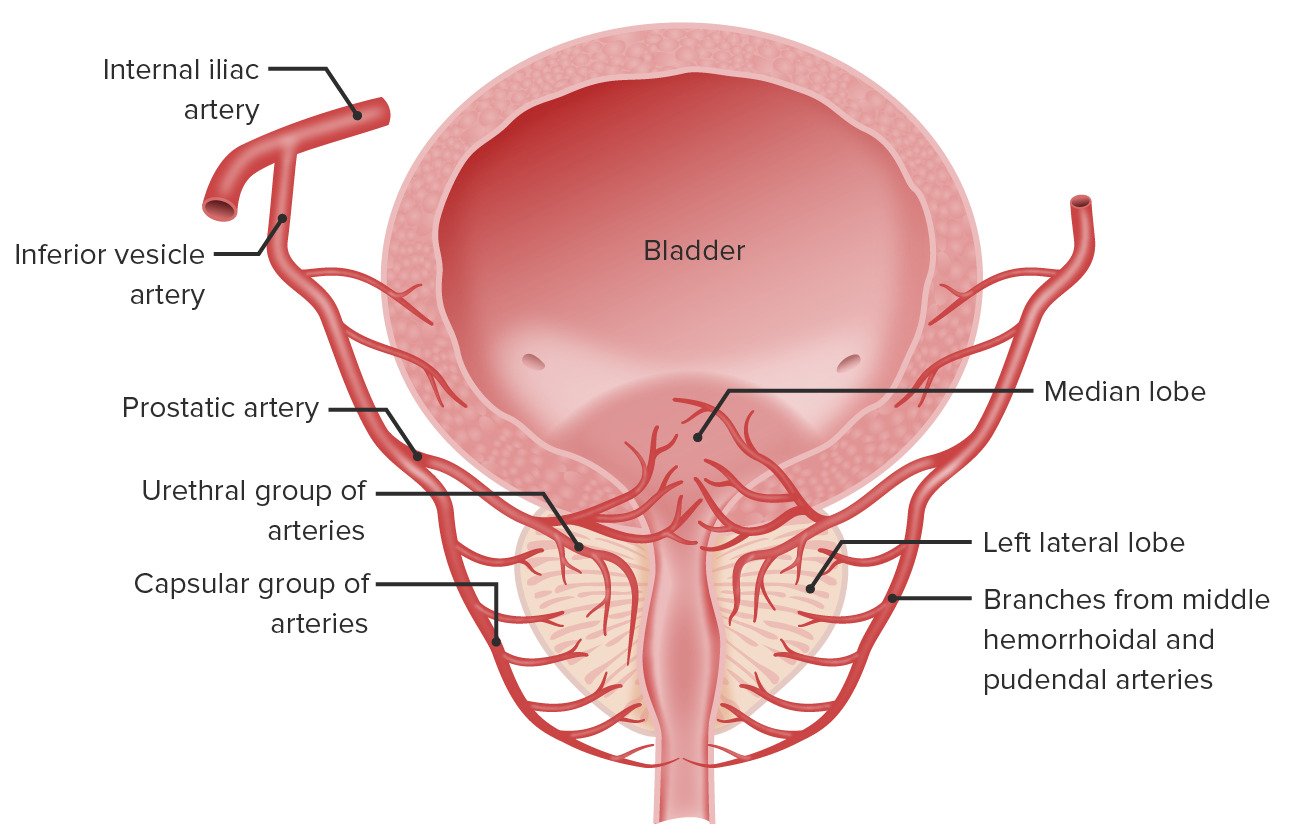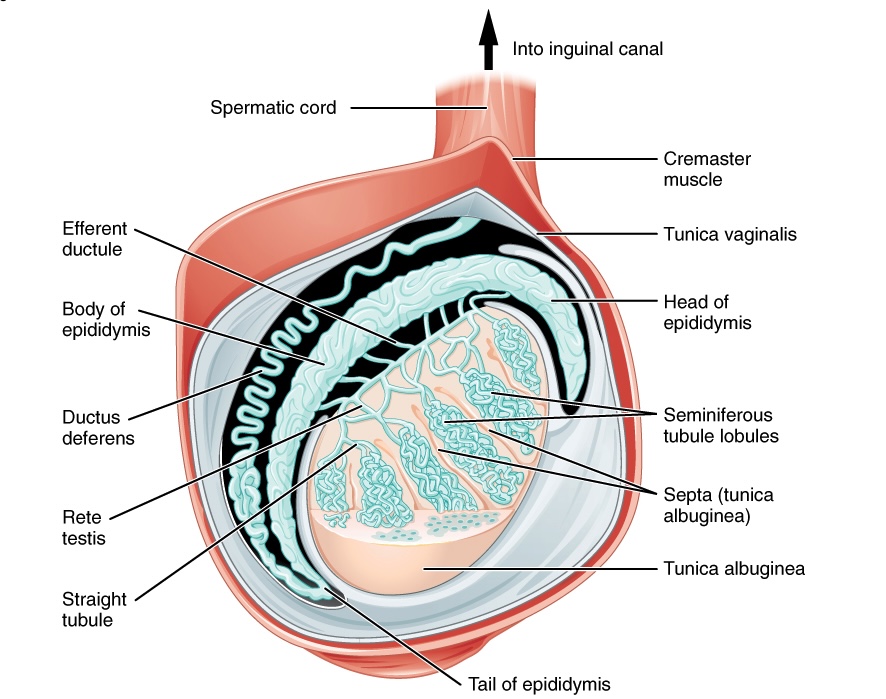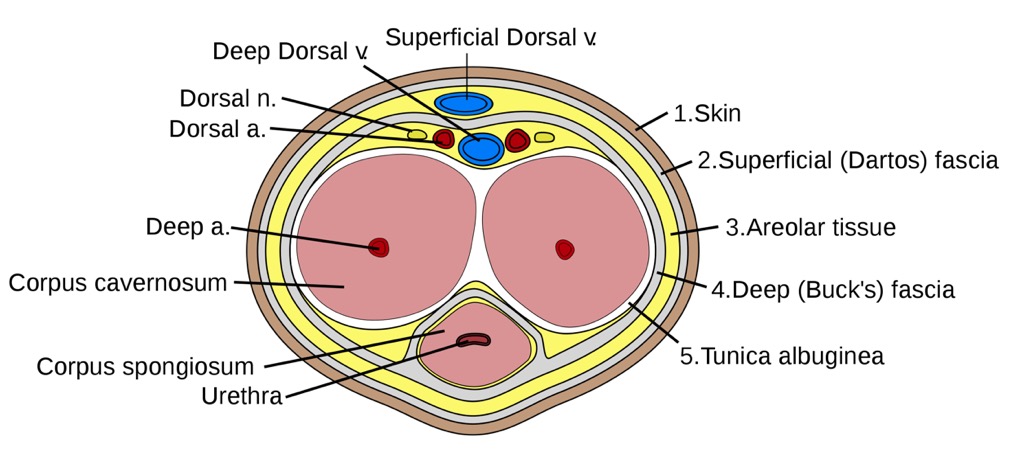Playlist
Show Playlist
Hide Playlist
Testis: Spermatogenesis – Male Reproductive System
-
Slides 06 Human Organ Systems Meyer.pdf
-
Download Lecture Overview
00:00 In this slide, I’m going to explain briefly that there are three components to spermatogenesis. 00:09 Firstly, there is a spermatogonial phase, and I’ll explain that in a moment. But this is basically where the stem cell, the spermatogonia undergo a series of divisions to replace itself, but also to give rise to a population that they’re going to go forward and differentiate into spermatozoa. Then there is the spermatocyte stage. This phase is where the spermatogonia, having gone through a series of mitotic divisions, enter into divisions of meiosis. Whereby, they’re going to have their chromosome number reduced to a haploid complement, and therefore, half the DNA content as well. And then finally, there is this stage called the spermatid phase. 01:02 That’s the stage where the spermatids undergo final structural changes, rather dramatic structural changes as you’ll see, to then form the sperm, all be it at this stage, very motile. But they have the structural characteristics and appearance as of spermatozoa. And again, on the left-hand side, you can see the diagram, it’s going to persist. And I’m going to refer to that as we go through. Let’s, first of all, look at the spermatogonial phase. 01:40 There are a series of spermatogonia up against the wall of the tubule, which is rather thin. 01:46 And those spermatogonia, very hard to distinguish really, in histological section stained with hematoxylin and eosin. So I’m only really going to point out the principle of what’s happening with these cells here, and try and illustrate an example of them. But again, let me emphasize, they are really hard to distinguish in sections. Well, this type A dark spermatogonia undergoes a mitotic division on a regular basis to replace itself and to give rise to a population of cells that are going to go forward, as I mentioned earlier, to become the spermatogenic population of cells and form the spermatozoa. Now sometimes, a person may have chemotherapy treatment. The young male or even adult male or even old male may have chemotherapy because of cancers. And that can wipe out all these spermatogenic cells because they’re undergoing division. However, they will lose the ability to produce sperm during that period. But because these spermatogonia, sitting up against the basement membrane, are also at a resting phase during their lifespan, they can still later on give rise to more spermatogonia, and therefore, the person can acquire again a population of spermatogenic cells. I said earlier young adult and old adults. It’s because in males after puberty, males produce spermatozoa all their life until they die. Unlike in the female when menopause comes about and no longer is an oocyte release an ovulation. These spermatogonia, as I said, mitosis and changes into two other cells, but you can see also up against the wall of the seminiferous tubule. And again, I stress they’re very hard to identity. 04:02 But the pale spermatogonia, they go through a series of mitotic divisions. And then finally, those cells are initiated to go into the meiotic process. They get to the stage where they are termed Type B spermatozoa, or I should say Type B spermatogonia. These are the ones destined then to go forward. So really in summary here, there is this division of spermatogonia forming another population of spermatogonia, and then a further division to create a population of cells that will go forward to produce the spermatogenic population of cells you see in the epithelium in front of you in these slides. Let’s now look at the spermatocyte stage, the cells undergoing meiosis. The very first meiotic division is easy to see, or at least evidence of the first stage of meiosis is easy to see because the cells accumulate an enormous clumping of their chromosomes, all the chromatin clumps in these cells. 05:20 And they are the first easiest cell to identify. And you can see many of them in this section through the testis. They are called primary spermatocytes. They’re in the primary, first process of meiotic division. 05:35 The green labelled cell on the base of the seminiferous tubule in the diagram represents a spermatogonia. It’s a flattened cell, whereas, the two above it and the one to the left represent the primary spermatocytes that have moved away from the wall of the seminiferous tubule. Those cells then move into a second meiotic division. And that division is very quick. It’s often very difficult to find these secondary spermatocytes. 06:14 Secondary spermatocytes are going through the second meiotic division. They’re much smaller cells, but you can see here in this section through the testis, eosinophilic cells with again clumped chromosomal content in the nucleus. So, look at the slide and you should be able to identify the difference between primary spermatocytes and secondary spermatocytes. 06:42 And these are represented by the cells in blue in this particular diagram, the ones away almost next to the green colored slides that were the primary spermatocytes. 06:58 These cells then quickly go through a stage where they develop into spermatid structures, the spermatid phase. And these cells are identified because they have a very rounded, small rounded rather prominently and dark stained nucleus, but the cells are quite small. And again, they’re represented in the diagram by the blue cells on the top, smaller cells, and some are even sort of shaped in a funny way because they’re going through a morphogenesis to form a very early spermatozoa. 07:37 They then go into a later stage where they then form these little tiny structures you see at the very luminal aspect of the seminiferous tubule. By now, they have a shape that you’re more familiar with, with identifying spermatozoa as shown in the diagram. On the top of the diagram, these long pale nuclei, blue stained nuclei, and the long tail has developed. Well, those late spermatids that you see here are developed from the more smaller circular early spermatid shown in the diagram, a total transformation in structure. And finally, these cells are released into the luminal space, these late spermatids. And then they move through the fluid all the way along the length of the seminiferous tubule into the mediastinum into the rete testis where they then moving on further into some of the ducts that I’ll talk about in a later lecture.
About the Lecture
The lecture Testis: Spermatogenesis – Male Reproductive System by Geoffrey Meyer, PhD is from the course Reproductive Histology.
Included Quiz Questions
Which type of cell undergoes mitosis during spermatogenesis?
- Spermatogonium
- Diploid spermatocyte
- Spermatid
- Spermatozoid
- Haploid spermatocyte
Which of the following shows the correct sequence of cells during spermatogenesis?
- Spermatogonium, spermatocyte, spermatid
- Spermatocyte, spermatogonium, spermatid
- Spermatocyte, spermatid, spermatogonium
- Spermatid, spermatogonium, spermatocyte
- Spermatogonium, spermatid, spermatocyte
Which of the following best represents the age range of gametogenesis in men?
- From puberty until death
- 14-40 years
- 14-60 years
- 11-65 years
- 11-45 years
During spermatogenesis, the second meiotic division occurs between which of the following?
- Secondary spermatocyte and spermatid
- Spermatogonium and primary spermatocyte
- Spermatid and spermatozoa
- Secondary spermatocyte and spermatogonium
- Secondary spermatocyte and primary spermatocyte
Customer reviews
5,0 of 5 stars
| 5 Stars |
|
5 |
| 4 Stars |
|
0 |
| 3 Stars |
|
0 |
| 2 Stars |
|
0 |
| 1 Star |
|
0 |






